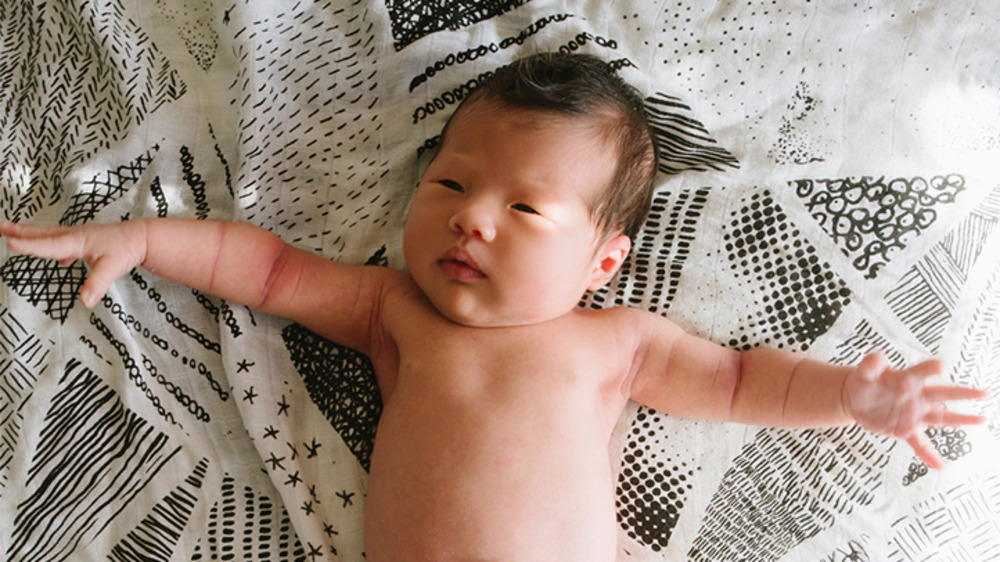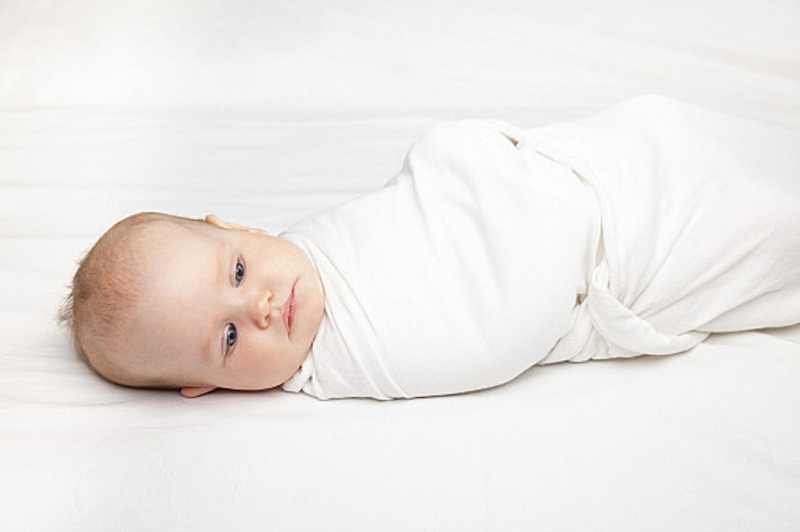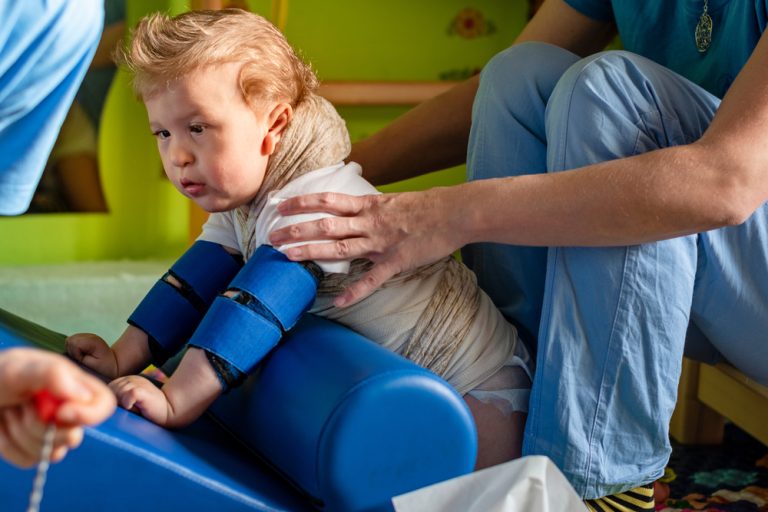The Moro Reflex in Babies: What Every Parent Needs to Know
Have you ever noticed your baby suddenly jolting awake with flailing arms and legs, as if startled by an invisible presence? This instinctive response is known as the Moro reflex, a common occurrence in infants that can leave both parents and babies feeling unsettled. Understanding moro reflex in babies and knowing how to manage it is crucial for providing your little one with the comfort they need to thrive.
In our upcoming blog, ‘The Moro Reflex: What Every Parent Needs to Know,’ we delve into the world of newborn reflexes to help you navigate this natural yet sometimes challenging phase.
From uncovering the triggers and symptoms of the Moro reflex to exploring effective techniques for soothing and minimizing its impact, we aim to equip you with expert advice and practical tips to support your baby through this developmental milestone.
Join us as we untangle the mysteries behind the Moro reflex in babies and discover how you can create a safe and secure environment for your bundle of joy during this delicate period of growth and development.
Get ready to dive into the realm of infant reflexes and emerge with the knowledge and tools you need to navigate parenthood with confidence.
Introduction to the Moro Reflex in Babies

The Moro reflex, also known as the startle reflex, is a normal and natural response in newborns. It is an automatic reaction triggered by a sudden change in the environment or a sensation of falling. This reflex manifests as a quick and sudden movement of the baby’s arms and legs, often accompanied by a loud cry.
The purpose of the Moro reflex is to protect the baby from potential danger and ensure their survival. It is an instinctive response inherited from our ancestors, who needed to react quickly to threats in their environment.
When a baby experiences the Moro reflex, it may appear as if they are startled or frightened. However, it’s important to note that this reflex is not a sign of distress or discomfort. It is a temporary phase in their development and will naturally diminish over time.
The Moro reflex in babies typically occurs and is most pronounced during the first few months of life. As the infant’s nervous system matures and their control over their body increases, the Moro reflex gradually decreases in intensity and frequency. By the time the baby reaches four to six months of age, the Moro reflex should largely disappear.
Understanding the Moro reflex and its purpose can help parents and caregivers provide comfort and security to their little ones during this reflex phase. By creating a calming and soothing environment and utilizing specific techniques, it is possible to minimize the intensity and frequency of the Moro reflex, ensuring a more peaceful experience for both the baby and their caregivers.
Causes and Triggers of the Moro Reflex

The Moro reflex, also known as the startle reflex, is a natural and instinctive response seen in newborn babies. This reflex occurs when infants experience sudden movements, loud noises, or a sense of falling. Understanding the causes and triggers of the Moro reflex can help parents better navigate this phase in their baby’s development.
Physiologically, the Moro reflex is triggered by a primitive brain reaction to sensory stimuli. The sudden movements or loud noises cause a brief contraction of the muscles, followed by an extension of the arms and legs and then a subsequent retraction. This response helps infants maintain balance and protect themselves from potential harm.
Environmental factors can also play a role in triggering the Moro reflex. Bright lights, sudden changes in temperature, or even being startled by a loud noise can startle a baby and initiate a reflexive response.
It is important for parents to remember that the Moro reflex is a normal part of their baby’s development. However, if the reflex becomes excessive or causes significant distress, consulting a healthcare professional can provide additional guidance and support.
Overall, understanding the causes and triggers of the Moro reflex can empower parents to create a calm and soothing environment for their little ones, minimizing the intensity and frequency of this reflexive response.
Signs and Symptoms of the Moro Reflex

When infants experience the Moro reflex, they often exhibit several common signs and symptoms. These reflexive movements can startle both the baby and the caregiver.
Here are some typical signs to look out for:
1. Startling
The Moro reflex causes a sudden and exaggerated startle response in infants. This may involve the baby throwing their arms and legs outwards and then rapidly bringing them back in.
2. Crying
The startle response can often lead to crying or fussiness in babies. They may become distressed and seek comfort from their caregiver.
3. Difficulty sleeping
The Moro reflex can disrupt sleep patterns, especially during the newborn stage. Babies may wake up frequently due to startle movements.
4. Sensitivity to loud noises
Infants with the Moro reflex may be more sensitive to loud sounds. Loud noises can trigger the startle response, causing discomfort or fear.
Understanding these signs and symptoms can help parents identify if their baby is experiencing the Moro reflex and respond with appropriate soothing and comforting techniques.
Understanding the Developmental Stage of the Moro Reflex

The Moro reflex is a normal and natural response in infants that usually occurs between birth and the age of 4 months. During this stage, newborns may exhibit sudden, involuntary movements and startle responses. The Moro reflex typically disappears as babies grow older and develop more control over their movements.
Around the age of 2 months, the Moro reflex begins to diminish, and by 4 months, it usually disappears or becomes significantly less pronounced. As the baby’s nervous system matures, their ability to regulate and control their movements improves, leading to the disappearance of the Moro reflex.
It’s important to keep in mind that every baby is unique, and the exact timeline for the disappearance of the Moro reflex may vary. However, if you notice any concerns or unusual patterns related to your baby’s startle responses, it’s always a good idea to consult with your pediatrician for professional advice and guidance.
Strategies for Soothing and Minimizing the Moro Reflex

The Moro reflex, also known as the startle reflex, can be unsettling for both babies and parents. Fortunately, there are effective strategies that can help soothe and minimize the intensity of this reflex in infants. By providing comfort and security to your little one, you can alleviate their distress and promote a sense of calm.
Here are some practical tips and techniques for managing the Moro reflex:
1. Swaddling
- Swaddling your baby can recreate the feeling of being in the womb, providing a sense of security.
- Use a lightweight and breathable swaddle blanket, ensuring that it’s snug but not too tight.
- This can help limit the exaggerated startle response associated with the Moro reflex.
2. Gentle Touch and Motion
- Babies find comfort in gentle touch and movement.
- Try softly massaging your baby’s back or gently rocking them in your arms.
- This can help soothe their nervous system and reduce the intensity of the Moro reflex.
3. Supportive Holding and Carrying Positions
- Experiment with different holding and carrying positions that make your baby feel safe and supported.
- Some babies find comfort in being held close to the chest, while others prefer being cradled in the crook of your arm.
- Find what works best for your little one.
4. Creating a Calm and Comfortable Environment
- Minimize loud noises and bright lights in the immediate environment.
- Creating a peaceful atmosphere can help reduce the triggers that can intensify the Moro reflex.
- Consider using blackout curtains and white noise machines to create a serene sleep environment for your baby.
5. Incorporating White Noise and Soft Music
- Certain sounds, such as white noise or soft lullabies, can provide a soothing background noise for your baby.
- Experiment with different sounds and melodies to find what calms and comforts them during the Moro reflex episodes.
Remember, every baby is unique, and it may take some trial and error to find the strategies that work best for your little one. Be patient and attentive to their cues, and consult with your healthcare professional if the Moro reflex is causing excessive distress or interfering with your baby’s well-being.
Creating a Calm and Comfortable Environment

Babies experiencing the Moro reflex can greatly benefit from a calm and soothing environment. Creating a peaceful atmosphere not only helps reduce the frequency and intensity of the reflex but also provides comfort and security to your little one. Here are some techniques to ensure a calm and comfortable environment for your baby:
Reduce noise
Minimize loud and sudden noises as they can trigger the Moro reflex. Use sound machines or white noise apps to create a more serene auditory environment.
Maintain optimal temperature
Keep the room temperature comfortable and consistent. Ensure your baby is neither too hot nor too cold, as fluctuations in temperature can disturb their sleep.
Dim the lights
Soft, dim lighting can create a calming ambiance. Use blackout curtains or shades to block out excessive light during nap times or bedtime.
Establish a bedtime routine
Consistency and predictability help babies feel secure. Establish a soothing bedtime routine that includes activities like a warm bath, gentle massage, and reading a bedtime story.
Use comforting scents
Some parents find that incorporating soothing scents like lavender or chamomile can help relax the baby. Use them in the form of essential oils or natural room sprays, keeping them at a safe distance from your baby.
By focusing on creating a calm and comfortable environment, you can minimize the impact of the Moro reflex on your baby’s sleep and overall well-being.
Utilizing Swaddling Techniques

Swaddling is a technique that can provide comfort and security to babies experiencing the Moro reflex. By wrapping your baby snugly in a blanket, you can help reduce the intensity of the startle response and promote a sense of calm. Here are some benefits and proper techniques for swaddling:
Benefits of Swaddling
Mimics the womb
Swaddling creates a cozy environment that reminds babies of the tight space they experienced in the womb, providing a sense of familiarity and comfort.
Reduces startle response
The gentle pressure of the swaddle can limit the range of movement and minimize the strong arm and leg flailing associated with the Moro reflex.
Enhances sleep
Swaddling can promote longer and more restful sleep by preventing sudden awakenings caused by startle movements.
Soothes fussiness
The secure feeling created by swaddling can help soothe babies and reduce colic symptoms, allowing for more peaceful moments.
Proper Swaddling Techniques
1. Start with a square blanket
Lay the blanket flat, positioning it in a diamond shape with one corner pointing up and the other three corners spread out.
2. Place your baby in the center
Position your baby with their head above the top corner of the blanket.
3. Secure one arm
Take the corner of the blanket on the same side as your baby’s arm and fold it snugly across their chest, tucking it underneath their opposite armpit.
4. Secure the other arm
Fold the remaining corner across your baby’s chest, securing their other arm comfortably at their side.
5. Bring up the bottom corner
Fold the bottom corner of the blanket up and over your baby’s legs, tucking it into the top of the swaddle.
6. Check for proper fit
Ensure the swaddle is snug but not overly tight, allowing for some movement of your baby’s legs and hips.
Remember, it’s important to discontinue swaddling once your baby starts showing signs of rolling over to prevent any safety concerns. Always monitor your baby during swaddling and adjust the technique based on their comfort. With the careful use of swaddling, you can provide a soothing and nurturing environment for your little one during their reflex phase.
Using Gentle Touch and Motion

Babies experiencing the Moro reflex can find comfort and relief through gentle touch and motion. These techniques can help soothe and minimize the intensity of the reflex, providing a sense of security to your little one.
1. Gentle Stroking
- Gently stroke your baby’s arms, back, or legs with your fingertips.
- The soft touch can create a calming sensation and help alleviate the startle response associated with the Moro reflex.
- Remember to use gentle and slow motions to avoid overstimulation.
2. Rocking or Swinging
- Rocking or swinging your baby in a gentle and rhythmic motion can have a soothing effect.
- Whether in your arms, a rocking chair, or a swing, the repetitive movement can help your baby relax and feel more secure.
- Always ensure the environment is safe and secure during this motion.
3. Baby Massage
- Consider incorporating baby massage techniques into your daily routine.
- Massage can promote relaxation and relieve tension in your baby’s muscles, helping to reduce the intensity of the Moro reflex.
- Use gentle strokes and be responsive to your baby’s cues.
4. Kangaroo Care
- Skin-to-skin contact, also known as kangaroo care, has been shown to have numerous benefits for both the baby and the parent.
- This practice involves holding your baby directly against your bare chest, providing comfort and warmth.
- The close contact can help regulate your baby’s breathing, heart rate, and body temperature.
5. Calming Sounds
- Soft and calming sounds, such as gentle lullabies or white noise, can create a soothing environment for babies experiencing the Moro reflex.
- The rhythmic sounds can help drown out sudden noises that may trigger the reflex, promoting a sense of calmness and relaxation.
Remember to observe your baby’s reactions and adjust the level of touch and motion accordingly. Each baby is unique, so finding the techniques that work best for your little one is essential. Incorporating gentle touch and motion into your daily routine can help your baby navigate the Moro reflex phase with comfort and security.
Providing Supportive Holding and Carrying Positions

When it comes to managing the Moro reflex in babies, choosing the right holding and carrying positions can make a significant difference in providing security and comfort. By understanding how different positions affect your little one, you can create a soothing environment that helps minimize the intensity of the reflex.
Here are some supportive holding and carrying positions that can help:
Cradle Hold
- The classic cradle hold, with your baby’s head resting in the crook of your arm, provides a sense of closeness and security.
- By gently rocking your baby in this position, you can create a calming effect that mitigates the startle response.
Chest-to-Chest Carry
- Holding your baby against your chest, with their cheek resting on your shoulder, promotes bonding and warmth.
- This position allows your baby to feel your heartbeat, mimicking the soothing sensations they experienced in the womb.
Kangaroo Care
- Skin-to-skin contact through kangaroo care can have a profound impact on your baby’s well-being.
- Placing your baby on your bare chest allows them to feel your warmth, hear your heartbeat, and experience a sense of safety and calm.
Babywearing
- Using a supportive baby carrier or sling can provide a snug and secure environment for your baby.
- The gentle swaying motion and the feeling of being close to you can help reduce the intensity of the Moro reflex.
Remember, each baby is unique, so it may take some trial and error to find the most comfortable position for your little one. Pay attention to their cues and adapt your holding or carrying technique accordingly.
As you explore different positions, ensure that your baby’s head and neck are properly supported at all times. Maintaining a secure and relaxed posture is essential for minimizing the startle response associated with the Moro reflex.
Providing supportive holding and carrying positions not only helps soothe your baby during the Moro reflex phase but also strengthens the bond between you and your little one. Experiment with various positions to find what works best for both of you, providing the comfort and security your baby needs.
Incorporating White Noise and Soft Music
White noise and soft music can be effective in soothing babies experiencing the Moro reflex. The gentle background sounds create a soothing environment that helps to minimize the startle response and promote relaxation.
Here are some tips for incorporating white noise and soft music:
1. Choose the Right Sounds
- Opt for white noise or calming instrumental music that has a steady rhythm and low volume.
- Avoid sudden or sharp sounds that may startle the baby.
2. Use a Sound Machine
- Invest in a sound machine or a white noise app on your phone.
- These devices provide a consistent and soothing background sound that can help drown out other noises and create a peaceful atmosphere.
3. Create a Routine
- Establish a calming bedtime routine that includes playing white noise or soft music.
- This routine signals to the baby that it is time to relax and sleep.
4. Test the Volume
- Ensure that the volume is set at a level that is not too loud or too quiet.
- It should be just enough to mask other sounds in the environment without causing discomfort.
Remember, every baby’s preference for white noise or music may vary. Pay attention to their cues and adjust accordingly. Using white noise and soft music can aid in reducing the intensity of the Moro reflex and create a soothing atmosphere for your little one.
Seeking Professional Advice and Assistance
If your baby’s Moro reflex is causing excessive distress or interfering with their well-being, it’s crucial to seek professional guidance and assistance. Healthcare professionals, such as pediatricians or infant development specialists, can provide valuable insights and recommendations tailored to your baby’s specific needs.
Consulting with a healthcare professional allows for a comprehensive evaluation of your baby’s overall development and helps identify any underlying factors contributing to the intensity or frequency of the Moro reflex. They can offer guidance on techniques, exercises, or therapies to help minimize the reflex and create a more comfortable experience for your little one.
Remember, healthcare professionals are experienced in dealing with infant reflexes and developmental challenges. Their expertise can provide reassurance, support, and effective strategies specific to your baby’s situation. Don’t hesitate to reach out for professional advice to ensure your baby’s well-being and promote a more peaceful and soothing environment for both of you.
The Final Note: Moro Reflex
As we conclude our exploration of the Moro reflex, it’s clear that understanding this natural occurrence is vital for parents and caregivers. By recognizing the triggers, signs, and symptoms of the Moro reflex, we can take proactive steps to create a calming environment for our little ones.
With a nurturing and supportive approach, we can navigate this phase of development with confidence, ensuring that both babies and caregivers can experience greater peace and comfort. As your baby grows and matures, the Moro reflex will gradually diminish, paving the way for new milestones and experiences.
Stay informed, stay attentive, and continue providing the love and care that your baby needs during this delicate and transformative time.







